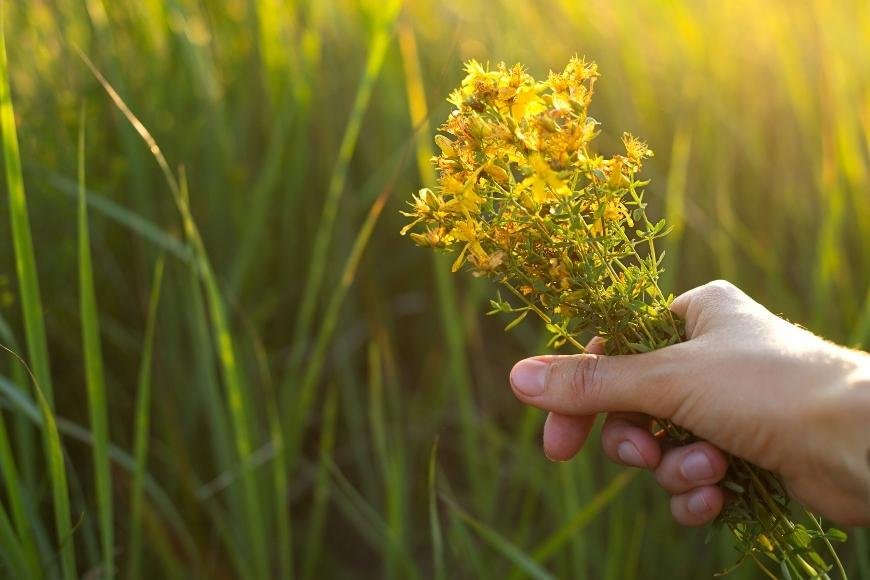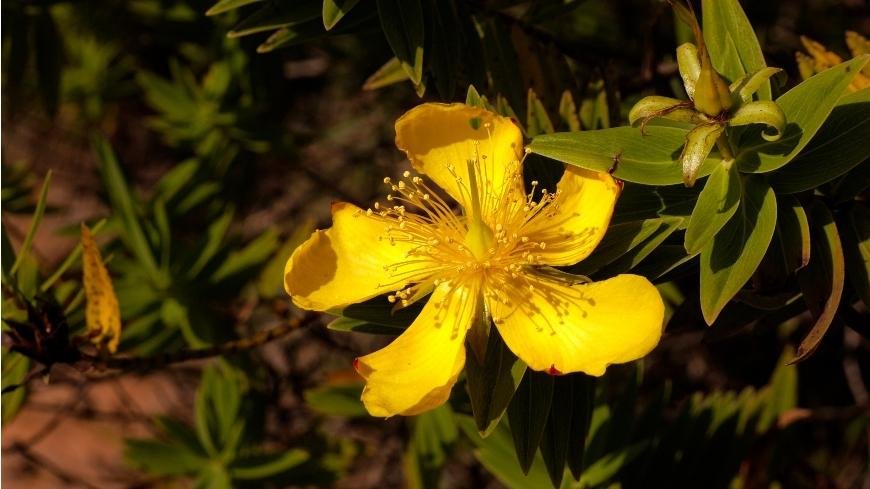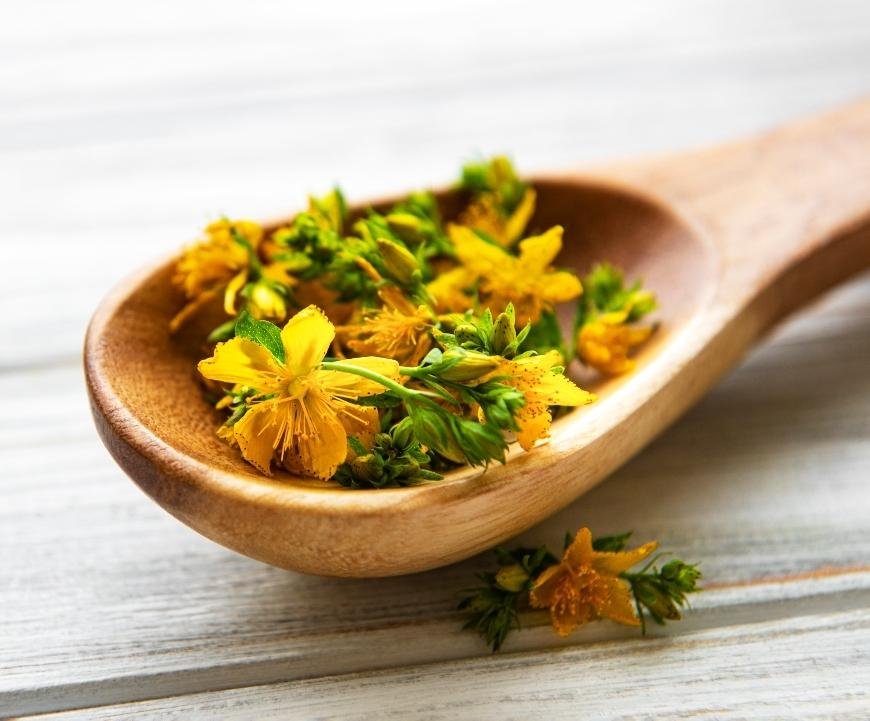How to Grow St John's Worth
This is the ideal destination if you're searching for information on cultivating St John's Worth. Learn about the complete cultivation process of St. Johns Wort.

If you're in search of information on cultivating St John's Worth, this is the ideal destination. This fascinating plant, known scientifically as Hypericum perforatum, has a long history of medicinal and recreational use. With its vibrant yellow flowers and branched stems, it makes for an attractive addition to any garden.
In this comprehensive guide on growing St John's Wort, we'll cover everything from choosing the right strain of Hypericum spp., preparing the soil for optimal growth conditions, planting and caring for your plants throughout their lifecycle, harvesting them at just the right time during their growing season, and even some storage tips for preserving your dried herb.
So whether you're interested in cultivating ornamental cultivars or seeking traditional uses of this powerful plant ally like creeping St John’s wort or common St varieties used medicinally – read on! We'll have you propagating and pruning St John's Wort seeds like a pro in no time.
Table of Contents:
- Choosing the Right Strain
- Preparing the Soil
- Planting and Caring for Your Plants
- Harvesting Your Plants
- Storage Tips
- Frequently Asked Questions How to Grow St John's Worth
- Conclusion
1. Choosing the Right Strain

Growing St John's Wort (Hypericum perforatum) can be an exciting and rewarding experience, especially if you're interested in exploring its potential benefits. Before planting, it is essential to understand the various types of St John's Wort and select the right strain for your requirements.
Different Types of St Johns Wort Plants
- Common St. Johns Wort: This is the most popular variety known for its medicinal properties. It has yellow flowers with black dots on their petals and grows up to 3 feet tall.
- Creeping St. Johns Wort: As the name suggests, this type creeps along the ground forming a dense mat-like structure. Its flowers are smaller than those of common St John's wort but still have a vibrant yellow color.
- Branched stems Hypericum spp: These ornamental cultivars feature branched stems that grow flowers in clusters at various heights, making them ideal for decorative purposes rather than medicinal use.
Selecting Your Strain Based on Purpose
If you're looking to grow St John's wort primarily for its therapeutic effects or as a natural remedy, opt for growing common st John's wort plants (Hypericum perforatum). On the other hand, if aesthetics are more important to you or if you want something low-maintenance that provides excellent ground cover, consider creeping st johns wort plant or one of many ornamental cultivars available.
Obtaining John's Wort Seeds or Cuttings
Once you've decided on the right strain, obtain John's Wort seeds or cuttings from a nursery or online supplier, or ask a friend with an established plant for some cuttings. You can purchase seeds online from reputable suppliers, while cuttings can be obtained either from a nursery or by asking a friend who already has an established plant. Keep in mind that propagating St John's Wort through cuttings is generally easier and faster than starting with seeds.
In conclusion, choosing the right strain of St John's Wort depends on your intended purpose for growing the plant and whether you prioritize its medicinal properties or ornamental appeal. Once you have made this decision, obtaining quality seeds or cuttings will set you up for success as you embark on your journey to grow flowers and experience their potential benefits firsthand.
2. Preparing the Soil
Before you start to grow St John's Wort, it is essential to prepare the soil correctly for optimal growth and yield. This involves choosing the right type of soil, amending it with necessary nutrients, and maintaining proper drainage.
Type of Soil
Hypericum perforatum, or common St John's Wort, thrives in well-drained soils that are slightly acidic to neutral (pH 5.5-7). Sandy loam or light clay soils work best for this plant. If your garden has heavy clay soil, consider adding some organic matter like compost or aged manure to improve its texture and drainage capabilities.
Fertilizing Your Soil
St John's Wort plants do not require a lot of fertilization; however, providing them with some nutrients will encourage healthy growth and flowering. Before planting your John's wort seeds, mix in an all-purpose slow-release granular fertilizer into the top few inches of your prepared soil at a rate recommended on the product label.
- Nitrogen: Promotes leafy green foliage growth but should be used sparingly as excessive nitrogen can lead to fewer flowers.
- Phosphorus: Encourages root development and flower production.
- Potassium: Helps strengthen cell walls leading to healthier overall plant structure while also aiding in disease resistance.
Maintaining Proper Drainage
To ensure that your growing St John's Wort plants have adequate drainage, make sure to plant them in raised beds or containers if your garden soil is heavy and retains water. Additionally, avoid overwatering the plants as this can lead to root rot.
Once the earth is prepped for your St John's Wort, it's time to move onto planting and tending them throughout their growth cycle. In the next section, we will discuss how to sow seeds, care for young seedlings, and maintain healthy branched stems as they grow flowers.
3. Planting and Caring for Your Plants
If you're ready to grow St John's Wort in your garden, it's essential to know how to properly plant and care for these plants. With the right techniques, you'll have a thriving crop of this powerful herb.
Planting St John's Wort Seeds
To start growing St John's Wort, begin by sowing seeds indoors or directly into the soil outdoors. If planting indoors, sow seeds about 6-8 weeks before the last frost date in your area. For outdoor planting, wait until after any risk of frost has passed.
- Indoor Sowing: Fill seed trays with well-draining potting mix and gently press seeds onto the surface without covering them since they need light to germinate. Keep trays moist but not soggy; placing a plastic cover over them can help maintain humidity levels.
- Outdoor Sowing: Scatter johns wort plant seeds on top of prepared soil (see section 2) where they will receive plenty of sunlight throughout the day - at least six hours is ideal.
Caring for Your Hypericum Perforatum Plants
Your newly planted St John's Wort plants require some attention during their growing season to ensure healthy growth and abundant flowering:
- Watering: Maintain consistent moisture levels around your common st john's wort plants without overwatering or allowing them to dry out completely between waterings - aim for damp but not soaked soil.
- Fertilizing: Apply a balanced, slow-release fertilizer in the spring to promote healthy growth and flowering. Avoid over-fertilizing as this can lead to excessive foliage at the expense of flowers.
- Pruning: To encourage branching and bushier growth, pinch back young plants when they reach about 6 inches tall. For established plants, prune them back by one-third each year after flowering has finished.
- Pest Control: Keep an eye out for common pests such as aphids or spider mites; treat with insecticidal soap or neem oil if necessary.
Propagating St John's Wort
If you want more St John's Wort plants without buying additional seeds, it's possible to propagate them through cuttings or division:
- Cuttings: In late summer or early fall, take 4-inch-long stem cuttings from your existing plant st john's wort. Remove any leaves from the bottom half of the cutting and dip it into rooting hormone before planting in well-draining potting mix.
- Division : In spring , divide mature creeping st johns wort plants by carefully digging up their root ball and separating sections with a sharp knife . Replant these divisions immediately into prepared soil.
Taking care of your plants is critical for flourishing, so make sure to devote time to learning the proper methods before planting. Once you have a good understanding of proper care and maintenance, it's time to focus on the harvesting process in order to achieve maximum yield.
4. Harvesting Your Plants

Reaping the rewards of cultivating Hypericum perforatum can be a fulfilling task, and picking your plants at an opportune moment guarantees you gain their therapeutic advantages. In this section, we'll discuss when to harvest your Hypericum perforatum plants and how to properly dry them for storage.
When to Harvest St John's Wort
Harvesting St John's Wort should be done during its peak growing season, usually mid-summer (June or July), when the flowers are open and a vibrant yellow. The flowers should be fully open and vibrant yellow in color. Traditionally harvested on June 24th (St. Johns Day), it is believed that the potency of the herb peaks around this date.
How to Harvest St John's Wort
- Select healthy branches: Choose branched stems with an abundance of bright yellow flowers for optimal potency.
- Cut carefully: Use clean pruning shears or scissors to cut off the top third portion of each stem just below a leaf node.
- Rinse if necessary:If there are visible signs of dirt or pests on your freshly harvested stems, gently rinse them under cool water before drying.
Drying Your St John's Wort Plant Properly
To preserve both quality and effectiveness, follow these steps for drying your freshly harvested common St Johns wort plant material:
- Bunch together: Tie small bundles (about five stems per bundle) using twine or rubber bands at one end near where you cut the stems.
- Hang to dry: Hang your bundles upside down in a well-ventilated, dark area. Direct sunlight can cause loss of potency, so avoid drying them outdoors or near windows.
- Air circulation: Ensure there is adequate air circulation around each bundle to prevent mold growth and ensure even drying.
- Drying time: Allow your St John's Wort plants to dry for 1-2 weeks until they are crisp and brittle. You'll know they're ready when the leaves crumble easily between your fingers.
Incorporating these tips into your harvesting process will help you obtain potent dried herb from your Hypericum spp plants that can be used for various medicinal purposes. In the next section, we'll discuss how to store this precious harvest effectively for long-term use.
5. Storage Tips
To ensure potency and freshness, it's important to store harvested St John's Wort plants properly. In this section, we'll provide some essential tips on how to best preserve your stash of Hypericum perforatum.
Airtight Containers
The first step in storing your John's Wort plant is choosing the right container. Airtight containers made from glass or stainless steel are ideal for preserving the quality of your dried herb. Avoid using plastic bags or containers as they can leach chemicals into the plant material and compromise its potency.
Keep It Cool And Dark
Store your airtight containers in a cool, dark area such as a cupboard or drawer away from direct sunlight to avoid degradation caused by light exposure. Excessive heat can also negatively impact the quality of your Johns wort plants, so avoid placing them near radiators or other heat sources.
Avoid Moisture And Humidity
Maintaining low humidity levels is key when storing any type of dried herb including common St John's Wort. High humidity can cause mold growth which will ruin both flavor and medicinal properties of the plant material. To combat moisture issues, consider adding silica gel packets to each container before sealing it up tightly.
- TIP: If you live in an area with high humidity levels during certain parts of the year (such as summer), invest in a dehumidifier for optimal storage conditions.
- TIP: You can also use a vacuum sealer to remove air and moisture from your containers, further extending the shelf life of your St John's Wort.
Label Your Containers
To keep track of your stash, it's essential to label each container with the date you harvested and dried the plant material. This will help you monitor its freshness over time and ensure that you're using older stock before newer batches. Additionally, labeling is particularly important if you have multiple strains or ornamental cultivars of Hypericum spp in storage.
Incorporating these storage tips into your routine will not only preserve the potency and freshness of your St John's Wort plants but also ensure that they remain effective for their intended purposes - be it recreational or medicinal use. Happy storing.
Frequently Asked Questions How to Grow St John's Worth
Is St John's wort easy to grow?
Yes, St John's wort is relatively easy to grow. It can thrive in various soil types and conditions, making it suitable for beginners. However, it requires adequate sunlight and well-draining soil for optimal growth.
How long does St John's wort take to grow?
St John's wort typically takes around 2-4 months from planting seeds or cuttings until the plants are mature enough for harvesting. The flowering period usually occurs between June and September.
Can I plant St John's wort in the fall?
You can plant St John's Wort in the fall if you live in a region with mild winters. Planting during this time allows roots to establish before winter dormancy sets in, resulting in more robust growth come springtime. Ensure proper mulching to protect your plants from frost damage.
Conclusion
Growing St John's Worth is a rewarding experience that can bring you both joy and satisfaction. With the right strain, proper soil preparation, careful planting and nurturing of your plants, harvesting at the optimal time, and storing correctly afterwards - you will have an abundant crop to enjoy. Growing this plant takes effort but with dedication it is well worth it for those looking to cultivate their own St John's Wort.


































































































































